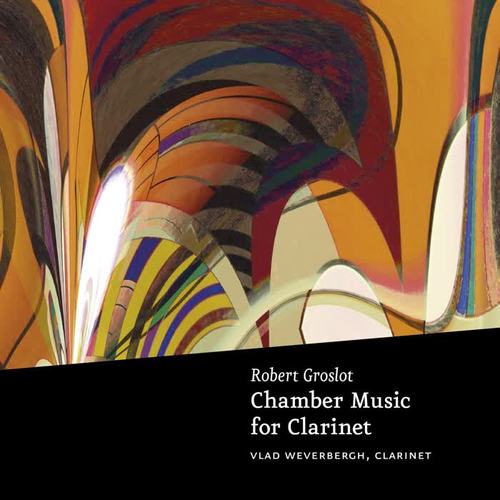
Groslot: Chamber Music for Clarinet
The clarinet is the perfect instrument, in which innovation and tradition go hand in hand. To this very day, the warm sonority and the broad technical possibilities give the clarinet a very interesting place in both the solo and chamber music repertoires. Robert Groslot makes gracious use of this exceptional position. The works represented here show that subtle chamber music and a passionate focus on the possibilities of each individual instrument can melt perfectly with one another.
The piece Hoquetus - Battaglia - Madrigal, for clarinet and harp, is a shining example of this. The harp transcends far beyond its traditional role as a mere accompanying instrument and engages in a lively dialogue with the clarinet. The title is a first hint at the game of attraction and rejection: the first part utilises the 14th-century hocket technique, in which both instruments leapfrog over one another as it were, in opposing alternation (hoquetus literally means to hiccup). The title, Battaglia (‘battle’), speaks for itself in this regard and the closing piece, the Madrigal, brings about a reconciliation between both instrumental players. The instruments in Wagner’s Moon, in this case the clarinet and the piano, are also complementary and play a game of leap frog, with one jumping ahead when the other has reached its end.
Groslot’s musical style also stems from a desire to reconcile the instruments. Absolutely functional chord usage disappears into the background, to the benefit of more texture-oriented activities. Short themes, which were originally introduced in just fragments, develop themselves systematically in the instruments involved. These themes often form nothing more than an auditory grip because, more so than due to a passionate motivic development, Groslot’s pieces are given shape from the variations in texture. The desire for intuitive-expressive composing was already leading to an increasingly more spontaneous development of the form by the late 19th century and composers were distancing themselves more and more from the rigid form structures like the sonata form.
Also, it is the music that dictates the form in Groslot’s work; not the other way around. The alternating technical complexity of Groslot’s pieces appear to have repercussions on the form: heavy clouds of sound alternate with phases of relative tranquillity and simplicity. The four parts of Painted Curves, for example, based on four modernist paintings, are subdivided in turn into various episodes that can be distinguished by their distinctive idiomatic sounds. In this way, various atmospheres and colours are always taking turns coming to the surface, especially in the more contemplative phases of each piece.
The same thing happens at the micro level: the alternating density of the sound, the rational use of the registers and instruments, and the utilisation of all the sound possibilities of the instruments ensure a rich palette of expressive opportunities. Nowhere is there mention of simply striving for an effect: Groslot’s pieces gain expressivity by the rational use of the various natural possibilities of the instruments in the context, both concerning technique and dynamic.
The compositional freedom that Groslot gives them is expressed in an eclectic style of composing, in which he uses the musical resources that the music demands every time. The archaic style of Hoquetus-Battaglia-Madrigal is already mentioned. The dreamlike atmosphere of Parfums éphémères brings up strong remnants of Debussy’s French impressionism: parallel chords, modality and epideictic embellishments result in a ‘perfumed’ style, supported by the precision that is characteristic of impressionism. The clarinet takes to this piece like a duck to water and the viola provides additional warmth to the sound. The solo piece, Statement-reflection-conclusion, is a sly wink at Stravinsky, with its technically challenging complexity, and Wagner’s Moon reveals a late Romantic undertone.
The pieces presented here do not let themselves get pigeonholed into a certain tradition, no more than Robert Groslot allows this to happen to himself. The composer departs from a musical idea or atmosphere (usually already suggested in the title) and develops this fundamental idea in a free manner. He lets himself complete the creative process, averse from the form structures that restrict freedom. His style of composing is therefore not some pastiche-esque neoclassicism, but rather a rational eclecticism with a hint of modernism.
[Text by Arne Herman]
